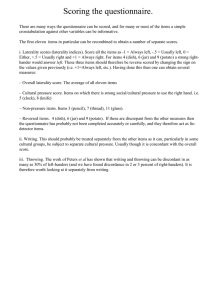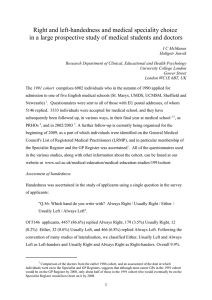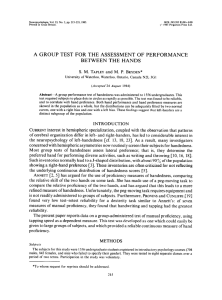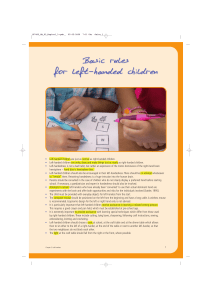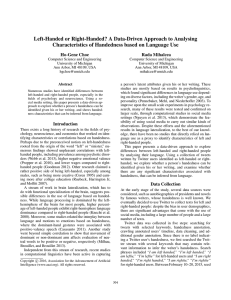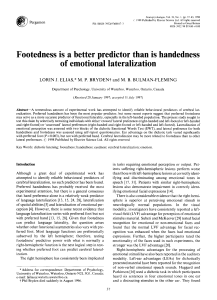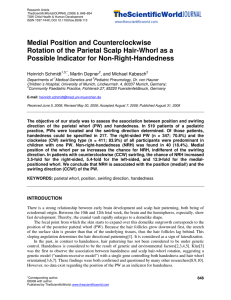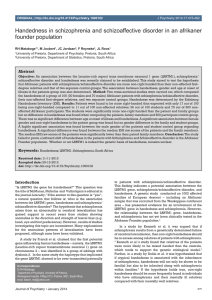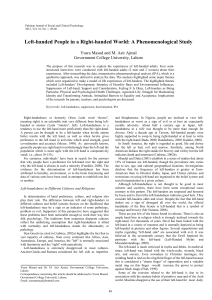Scoring the handedness questionnaire (q.26).
advertisement
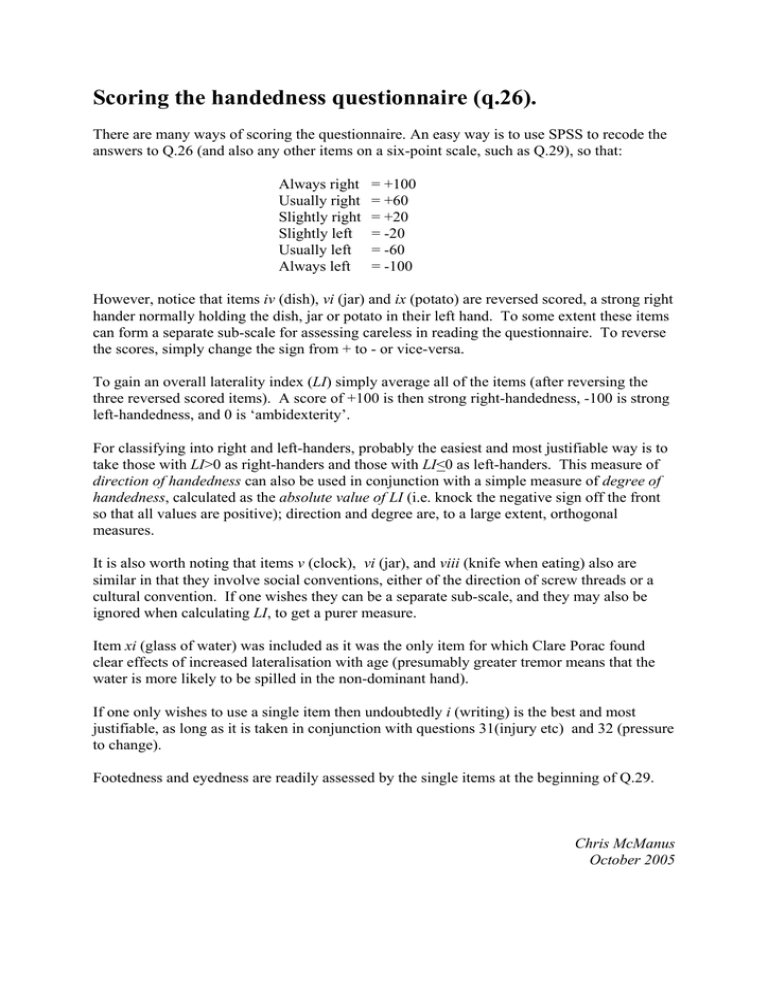
Scoring the handedness questionnaire (q.26). There are many ways of scoring the questionnaire. An easy way is to use SPSS to recode the answers to Q.26 (and also any other items on a six-point scale, such as Q.29), so that: Always right Usually right Slightly right Slightly left Usually left Always left = +100 = +60 = +20 = -20 = -60 = -100 However, notice that items iv (dish), vi (jar) and ix (potato) are reversed scored, a strong right hander normally holding the dish, jar or potato in their left hand. To some extent these items can form a separate sub-scale for assessing careless in reading the questionnaire. To reverse the scores, simply change the sign from + to - or vice-versa. To gain an overall laterality index (LI) simply average all of the items (after reversing the three reversed scored items). A score of +100 is then strong right-handedness, -100 is strong left-handedness, and 0 is ‘ambidexterity’. For classifying into right and left-handers, probably the easiest and most justifiable way is to take those with LI>0 as right-handers and those with LI<0 as left-handers. This measure of direction of handedness can also be used in conjunction with a simple measure of degree of handedness, calculated as the absolute value of LI (i.e. knock the negative sign off the front so that all values are positive); direction and degree are, to a large extent, orthogonal measures. It is also worth noting that items v (clock), vi (jar), and viii (knife when eating) also are similar in that they involve social conventions, either of the direction of screw threads or a cultural convention. If one wishes they can be a separate sub-scale, and they may also be ignored when calculating LI, to get a purer measure. Item xi (glass of water) was included as it was the only item for which Clare Porac found clear effects of increased lateralisation with age (presumably greater tremor means that the water is more likely to be spilled in the non-dominant hand). If one only wishes to use a single item then undoubtedly i (writing) is the best and most justifiable, as long as it is taken in conjunction with questions 31(injury etc) and 32 (pressure to change). Footedness and eyedness are readily assessed by the single items at the beginning of Q.29. Chris McManus October 2005
